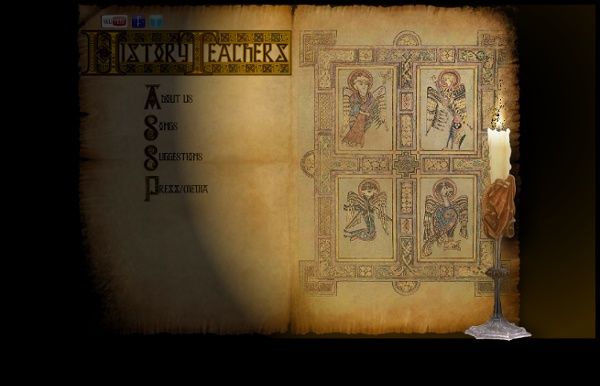



The History Guide -- Main Great Websites to Explore History The websites below are not intended only for history teachers but for anyone interested in taking a journey back into history.Some of them provide document search that allows you to search into the most important historical documents from well known and trusted archives. You will also find timelines documenting the major historical events or if you like maps then you can track back the history on maps. All these resources are free to use and do not require any download or software installation.Just browse through the selection below and click on any title to access the webpage. Make sure you share them with your students and colleagues as well. 1- Look Back Maps This is a website that allows users to view historical pictures of various locations on Google Maps, search for specific locations and even add images. 2- Timelines 4- This Day in History As its name suggests, this is a section where you will find important historical events that happened on this day. 5- World Digital Library
Vintage Audio - Call of America Reproduced below is the speech recorded by the U.S. Democratic Party politician James Hamilton Lewis, who served as a whip in the U.S. Senate. Addressing his fellow Senators Hamilton Lewis urged full support for the external war against Germany (or 'Prussia' as he termed it) in much the same manner as the internal struggles of the 1860s were similarly resolved successfully. Use the player above to listen to a recording of Lewis's speech from 1917. Call of America Senators, it is the fate of every self-governing people to be tried by two assaults. If a nation cannot survive these assaults, she is overcome by internal revolution, or subjugated by foreign foe. Among modern nations, France survived revolution from within, but was overcome in assault from without under Wellington. Now sirs, true to the course of history, these United States must meet the assault from without. Then arose her sons to the call of the flag.
The history of the paper clip: It was invented in 1899. It hasn’t been improved upon since Getty Images/BananaStock via Thinkstock. The paper clip is something of a fetish object in design circles. Its spare, machined aesthetic and its inexpensive ubiquity landed it a spot in MoMA’s 2004 show Humble Masterpieces. Most everyday objects—like the key, or the book, or the phone—evolve over time in incremental ways, and the 20th century in particular revolutionized, streamlined, or technologized the vast majority of the things you hold in your hand over the course of an average day. Before the paper clip, there was paper. In the 19th century, the invention of wood pulping and industrial paper mills made inexpensive paper widely available; the rise of commerce, bureaucracy, and literacy transformed it into masses of loose sheets of paperwork. “Mr. Here in Mr. Epinglier/Defehrt/Goussier via artoftheprint.com. Image of box via Officemuseum.com. The paper clip we think of most readily is an elegant loop within a loop of springy steel wire. 1899 US patent for paper clip machine/USPTO.
Louvre World History for Us All My Fake Wall - MyFakeWall.com The 2012 Statistical Abstract What is the Statistical Abstract? The Statistical Abstract of the United States, published since 1878, is the authoritative and comprehensive summary of statistics on the social, political, and economic organization of the United States. Use the Abstract as a convenient volume for statistical reference, and as a guide to sources of more information both in print and on the Web. Sources of data include the Census Bureau, Bureau of Labor Statistics, Bureau of Economic Analysis, and many other Federal agencies and private organizations. The U.S. Census Bureau is terminating the collection of data for the Statistical Compendia program effective October 1, 2011. Sources of Data The Abstract is also your guide to sources of other data from the Census Bureau, other Federal agencies, and private organizations. [Excel] or the letters [xls] indicate a document is in the Microsoft® Excel® Spreadsheet Format (XLS). available for free from Microsoft®. denotes a file in Adobe’s Portable Document Format.
Teaching World History & Geography - Conceptual Frameworks What to teach: conceptual frameworks This is the second component of a world history and geography body of knowledge to be taught in school: ....... chronological narrative ....... conceptual frameworks ....... thinking strategies What are conceptual frameworks? It is the job of conceptual frameworks to connect and organize knowledge to make it more meaningful. The alphabet, for example, is an artificial structure imposed on spoken language that enables us to read and write. A review of literature from history education and cognitive research strongly suggests that conceptual frameworks, by whatever name, contribute to meaningful understanding and should be a major component of history education. Themes History and geography educators often speak in terms of "themes" that represent an interest in phenomena that are manifested across several historical periods and/or geographic locations, and thus may offer useful insights into how humans generally behave and how the world generally works.
Essential Norman Conquest - An interactive day-by-day retelling of the events of 1066 Post Secondary Prep The Students.gov website was retired on October 2, 2011. You can find the information and resources listed on Students.gov at the following websites: USA.gov—The U.S. government's official Web portal to federal, state, and local government Web resources and services.CareerOneStop—Your pathway to career success.